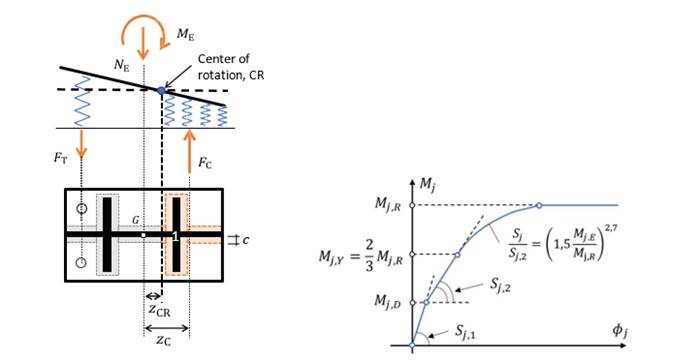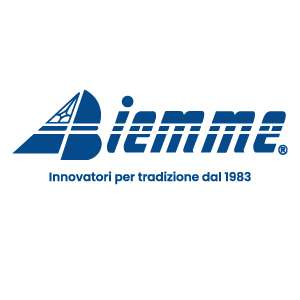Modello per componenti di collegamenti colonna-fondazione con irrigidimenti
Lo studio analizza la risposta meccanica di collegamenti colonna-fondazione con piatti di base irrigiditi, proponendo un modello basato sul metodo delle componenti (EN 1993-1-8) e confrontandolo con analisi a elementi finiti. I risultati evidenziano l'efficacia del modello semplificato e l'importanza delle forze parassite dovute alla flessione del piatto di base.
Questa memoria descrive uno studio teorico condotto con riferimento alla risposta momento-rotazione-sforzo normale di tipici collegamenti colonna-fondazione con piatti di base irrigiditi. Il modello proposto si basa sul ben noto metodo delle componenti, implementato nel documento normativo europeo EN 1993-1-8 esclusivamente per collegamenti non irrigiditi. Le previsioni del modello proposto sono state confrontate con quelle ottenute tramite l’analisi di modelli ad elementi finiti, con riferimento a due esempi di collegamenti tipici. I confronti tra le previsioni del modello proposto e quelle ottenute con i modelli ad elementi finiti mostrano le potenzialità del più semplice modello per componenti. Infine, viene anche illustrato e discusso il ruolo potenzialmente importante delle “forze parassite” conseguenti alla flessione del piatto di base.
The paper describes an analytical model to predict the moment-rotation-axial force response of column base plate connections including base plate stiffeners. The proposed model is based upon the theoretical background behind the well-known component method, which is employed in EN 1993-1-8 for unstiffened base plates only. The predictions of the proposed model were compared with numerical results obtained via finite element models of two selected sample connections. The comparisons show that the analytical model accurately represents the connection response as ob- served with the much more complex nonlinear finite element analysis. The potentially important role of prying forces in predicting the connection response is also highlighted.
EN 1993-1-8 (EC3) provides rules for calculating the rotational stiffness and moment resistance of some types of column base connections, via the so-called “component method”.
The types of connections considered by the code are relatively simple ones, with unstiffened base plates and subjected to a proportional loading (i.e., the axial force eccentricity is kept constant). However, base plate stiffeners have been quite extensively adopted in the past, and they could still be a preferred solution in case of new structures, as well as for strengthening existing connections with unstiffened base plates. Besides, there are cases where the response of the connections to non-proportional loading cases is of interest e.g., with a (almost) constant axial force and a var- ying bending moment in case of wind or seismic loading conditions.
In the current paper, starting from the model and results presented in Della Corte and Cantisani, the analytical details of the mechanical component-based model are presented first. Subsequently, comparisons between the analytical predictions and the results from finite element simulations are presented. Eventually, the potentially important role of prying forces is also highlighted.
The analytical model
For unstiffened base plate connections, the component model stipulated by EN 1993-1-8 assumes that the resultant of compression contact stresses is applied at the center of the column compressed flange. This is a rational approach, considering the fact the column flange acts like a vertical stiff- ener for the base plate, thus determining a concentration of contact stress below that column flange. However, in the case of a stiffened base plate, any vertical stiffener represents potentially a locus of contact stress concentration.
Therefore, the simple model with a single spring in compression (unstiffened base plates) must be substituted by one with distributed springs in correspondence of the vertical stiffeners. Figure 1 illustrates this mechanical model with a single spring in tension (assuming there is only one row of anchors) and a distributed spring system on the compression side of the connection. In the figure, the black solid line does indicate a rigid bar, as it is usually assumed within the component method.
The neutral axis location will clearly depend on the eccen- tricity of the axial force. Therefore, in the case of a non-proportional loading the neutral axis location moves during the loading process; particularly, for a monotonic increase of the bending mo- ment and a constant axial force, there is a continuous shift of the neutral axis towards the plate edge on the compression side. The change in the location of the neutral axis clearly corresponds to a change in the rotational stiffness of the connection. Consequently, a typical moment-rotation response, for a given axial force, will exhibit a reduction in the tangent stiffness, as far as the bending moment increases, until the plastic moment resistance is reached. A typical moment-rotation response is consequently shown in Figure 2.
To simplify the model, the behaviour of the connection is assumed to be well approximated by the following four distinct phases of response:
- The first phase of response is characterized by a sufficiently small eccentricity of the axial force, so that the base plate is fully compressed; the corresponding rotational stiffness will be indicated by 𝑆j,1.
- The second phase of response starts when tension forces develop in the anchors and, compression contact stresses become distributed over a part of the base plate; the corre- sponding rotational stiffness will be indicated by 𝑆j,2.
- The third phase of response starts when plastic deformations begin to develop somewhere in the connection; this phase is characterized by a continuous change of the rotational stiffness, because of the spread of plastic deformations; it will be assumed that the em- pirical response curve suggested by EC3 is still valid, as shown in Figure 2.
- The fourth and last response phase corresponds to reaching the plastic moment resistance; a plastic plateau is assumed for design purposes.
Clearly, the transition between two subsequent phases of the response does generally occur in a gradual manner. However, for a design-oriented analytical model it is assumed that the response can be approximated with abrupt transitions from one phase to the next.
These general concepts are further elaborated on analytical terms in the following sections with reference to the elastic and plastic response of the connection.

...Continua a leggere nel PDF in allegato.
(L'intera memoria è in lingua inglese).
La presente relazione è stata presentata in occasione del XXIX Congresso CTA, svoltosi a Milano il 26 e 27 settembre 2024.
Costruzioni Metalliche
Le costruzioni metalliche rappresentano una scelta strategica per strutture leggere, sicure, resistenti e sostenibili. Scopri su INGENIO tecniche, norme e soluzioni per progettare con l’acciaio.

Infrastrutture
News e approfondimenti sul tema delle infrastrutture: modellazione e progettazione, digitalizzazione, gestione, monitoraggio e controllo, tecniche...

Ingegneria Strutturale
Tutto quello che riguarda il tema dell’ingegneria strutturale: innovazione digitale, modellazione e progettazione, tecniche di costruzione e di intervento, controlli e monitoraggi, soluzioni per il miglioramento, evoluzione normativa, approfondimento di casi concreti e pareri degli esperti.

Ponti e Viadotti
News e approfondimenti riguardanti il tema dei ponti e viadotti: l’evoluzione normativa, gli strumenti digitali per la progettazione, il controllo e il monitoraggio, i materiali e le soluzioni tecniche, il controllo e la manutenzione, la formazione e i progetti nazionali e internazionali.

Progettazione
La progettazione costituisce un passaggio fondamentale nell’intero processo edilizio, poiché determina in maniera significativa la qualità, la...
Condividi su: Facebook LinkedIn Twitter WhatsApp
